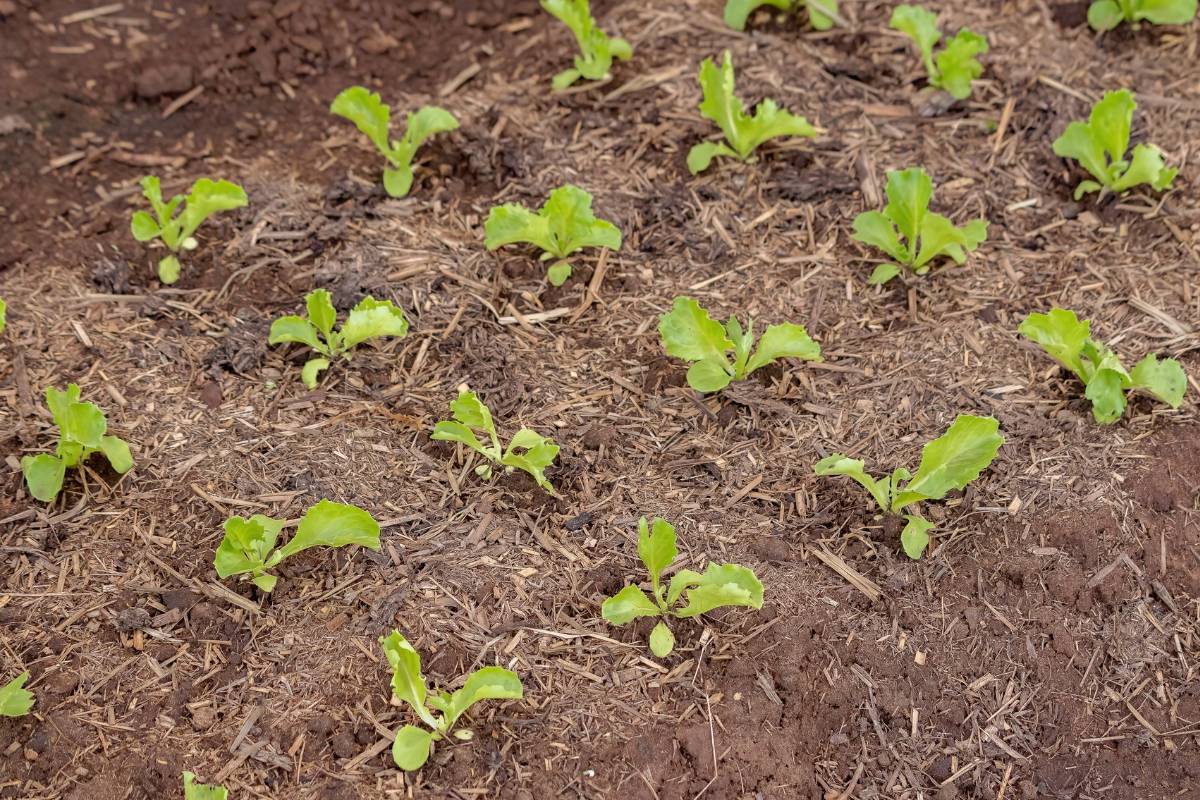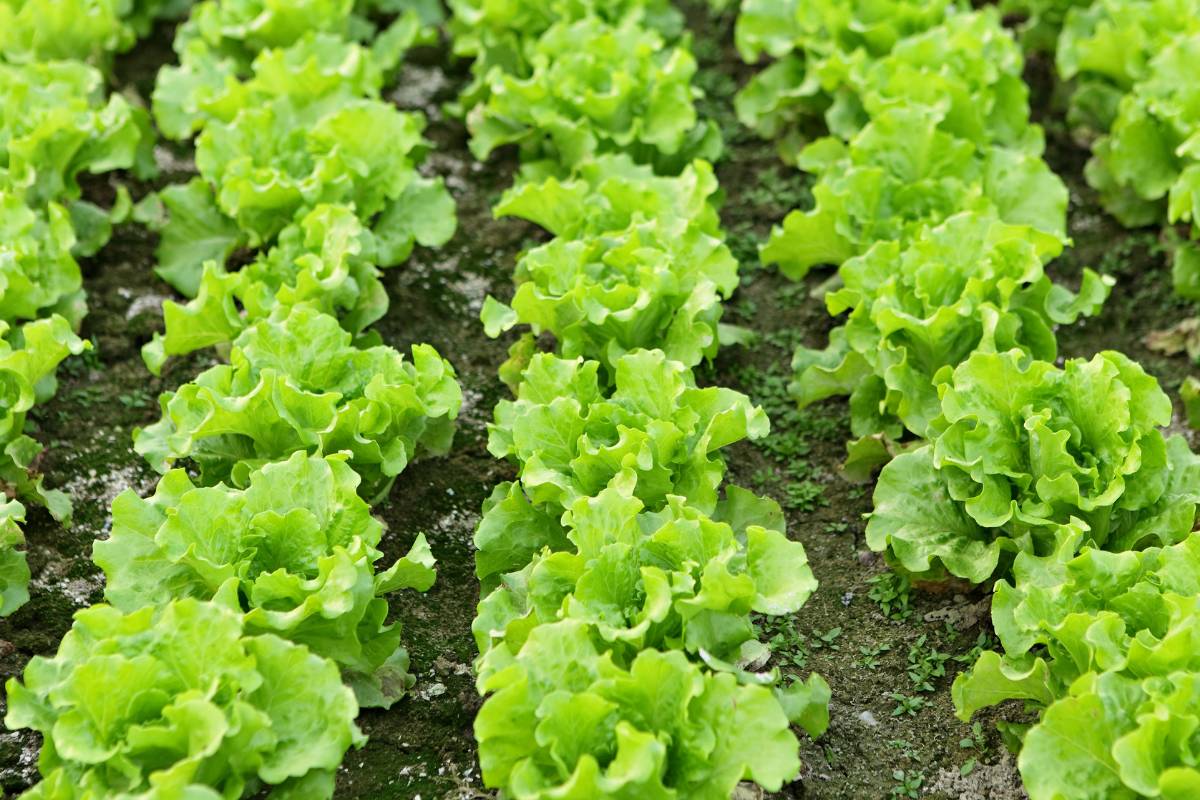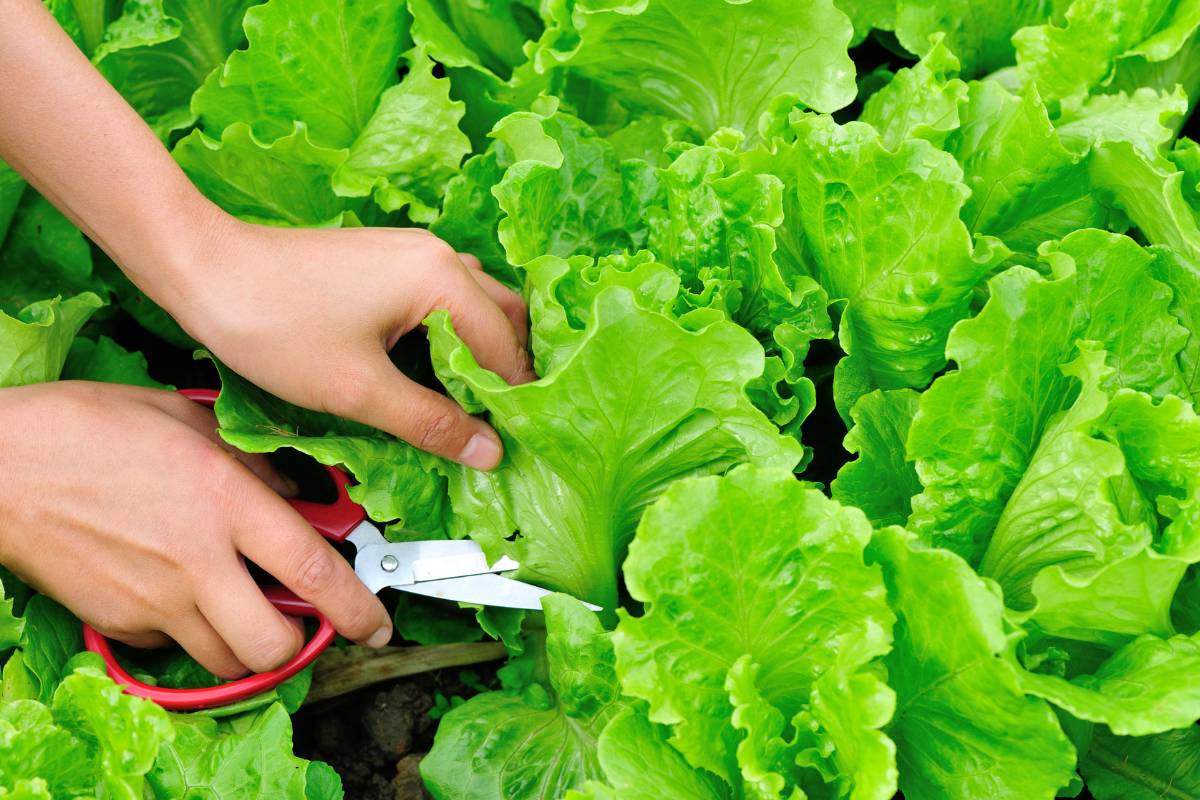Most of us associate lettuce with summer salads, but this incredibly versatile vegetable can be enjoyed fresh from your garden all year round. Are your winters wet and rainy? Do you have hot and dry summers? Whether it's choosing a bolt-resistant variety, planting in a different spot in the garden, or updating your watering regime, you can provide the perfect conditions to help your lettuce thrive with these 9 simple tips:
1. Know your Climate
The first step to year-round lettuce is finding out which climate you are growing in. Australia is typically divided into 5 main climate zones:
- Tropical with humid summers and warm, dry winters.
- Arid with hot, dry summers and winter temperatures that vary amongst regions.
- Subtropical with warm, humid summers and mild winters.
- Temperate has four distinct seasons, each with reliable rainfall and temperatures.
- Cool temperate typically has cold, rainy winters and hot, dry summers.
Depending on your climate, lettuce will require different care during the changing seasons. For example, if you have cool and wet winters, you will need to choose a sunny location with good drainage to grow your lettuce. Alternatively, if you garden in an arid zone, your lettuce will need protection from the hot summer sun (and germinating the seeds indoors might be a good idea).
Once you know what climate zone you are in, these next tips will help you provide what your lettuce needs to thrive.
2. Temperature
Lettuce is a cool-season crop that grows best between 10°C and 22°C with warm days and cool nights.
Lettuce will quickly bolt in hot weather. Bolt is when a plant goes to seed prematurely. While this can be caused by any environmental stressor (such as lack of water or excessive wind), heat is the most common reason lettuce “runs to seed” and bolted lettuce becomes bitter and rather unpleasant.
Temperature also has a big impact on germination, and lettuce seeds have difficulty germinating when soil temperatures go outside their ideal range. If the soil is cold, the seeds can rot or take a long time before they finally germinate.
If the soil temperature gets too hot, the seeds will sit idly in the ground until situations improve, or they can dry up and die. To start lettuce in hot weather, try:
- Putting seeds in a damp paper towel in a plastic container and keeping them in the fridge for a few days before planting.
- Starting the seeds indoors, and transplant them into the garden when they have 3-4 true leaves (but make sure to harden them off first).
3. Choose the Right Variety
It is important to choose a variety of lettuce that is suited to your climate. Since lettuce prefers cool weather, most varieties will grow well in the winter seasons, but many varieties, such as All Year Round, have been bred to be bolt-resistant and are especially well suited to summer growing.
Lettuce varieties come in different colours, flavours, and textures. The main types of lettuce are:
- Crisphead (such as iceberg) which forms a tight head and is best harvested all at once
- Loose Leaf which doesn’t form a central head
- Cos (or Romaine) which can be harvested as heads or individual leaves
- Butterhead which forms a loose head with tender, buttery-textured leaves
Many growers recommend choosing loose leaf varieties for summer growing, although Cos varieties are also very popular.
4. Find a Seasonal Planting Spot
Lettuce grows best in full sun, which means it needs 6 to 8 hours of sunlight each day (preferably in the morning).
When growing lettuce in cooler months, choose a spot that receives sufficient light throughout the day. When the weather is cool and humid, sunlight throughout the afternoon can be beneficial to keep the plants warm and dry.
When growing in the hot summer, choose a location that is shaded throughout most of the day, particularly during the hot afternoon. You can also create natural shade by growing your lettuce beside taller plants (such as climbing beans or corn), or under the large leaves of zucchinis or winter squash.
5. Preparing the Soil
Lettuce likes well-drained soil that has lots of organic matter.
Good drainage is particularly important in high rainfall or humid areas. Enriching the bed with well-rotted compost or other organic matter will not only provide all the nutrients needed, but it will aid with drainage in wet weather and improve water retention during a drought.
Lettuce grows best in slightly acidic soil where the pH is between 6.0 and 6.5. There are DIY kits to test the soil or you can send a sample away to a lab for a more detailed soil analysis.
6. Succession Planting
Succession planting is the backbone of year-round gardening. The premise of succession planting is sow seeds every few weeks so that by the time you finish harvesting, the next batch will be ready to eat.
For a continuous supply of lettuce, sow seeds approximately every 4 weeks all year long.
7. Watering
Lettuce has very shallow roots, so it needs consistent moisture to keep from drying out. Not only that, a lettuce leaf is more than 95% water, so it will quickly wilt or bolt if not hydrated.
Keep your lettuce growing in hot weather by:
• Water in the morning
• Avoid overhead watering
• Put down an organic mulch
• Shield your plants from the wind, which will dry them out faster
In humid regions, avoid overwatering which can cause rot (and also attract slugs and snails).
8. Mulching
Bare soil rarely exists in nature. If we leave our soil uncovered, we expose it to erosion, evaporation, excessive heat, blistering sun, and more. Putting down an organic mulch is one of the best ways to keep your lettuce growing, especially during the hot months.
Spread a 15cm layer of good organic mulch (ie: straw or sugarcane mulch) around your lettuce. This will trap moisture in the soil and prevent evaporation while keeping the soil cool by insulating it from the sun.
During the rainy season, you might want to roll back the mulch to give your lettuce a chance to dry out so it doesn’t rot.
9. Watch Out For Insects and Diseases
Thankfully, lettuce is a relatively problem-free vegetable but you still want to be on the lookout for a few problems.
All around the world, slugs and snails are the biggest problem when growing lettuce. They are especially attracted to moist environments, so pay particular attention during the rainy seasons and they love to hide under mulch or in shaded environments.
Thankfully, there are some excellent natural slug repellents (such as coffee grounds, Diatomaceous Earth, and copper rings), or you can make your own slug and snail traps.
Aphids (who can transmit necrotic yellow virus), thrips, and leaf miners are also drawn to lettuce, but they can also be handled with natural gardening methods.
Lettuce is also prone to rot in excessively moist conditions. Ensuring proper plant spacing (around 15cm to 30cm between plants depending on the variety) will allow air to circulate and sunlight to penetrate to help dry things out.
No matter where you live, with a little planning and a bit of TLC, you can successfully grow lettuce all year long. So, no matter what month it is, get out there and start growing!








